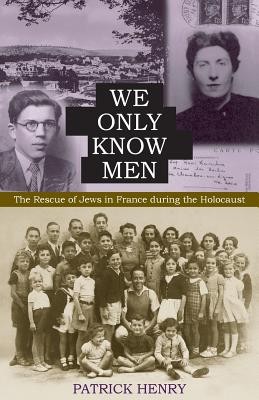
- We will send in 10–14 business days.
- Author: Patrick Henry
- Publisher: Catholic University of America Press
- ISBN-10: 0813226163
- ISBN-13: 9780813226163
- Format: 15.9 x 21.7 x 1.3 cm, minkšti viršeliai
- Language: English
- SAVE -10% with code: EXTRA
Reviews
Description
Patrick Henry, working with more than one thousand unpublished autobiographical pages written by key rescuers and with documents, letters, and interviews never before available, reconsiders the Holocaust rescue of Jews on the plateau of Vivarais-Lignon between the years 1939 and 1944. Henry carefully examines the general research of the last quarter century on rescue in that area of France, illuminating in detail the strengths and weaknesses of Philip Hallie's groundbreaking study Lest Innocent Blood Be Shed (1979) as they appear sixty years after the end of World War II.
In highlighting the involvement of Catholics, Protestants, and Jews in the rescue mission, the book looks closely at the lives and work of two rescuers on the plateau: a young Protestant man, Daniel Trocme, and a Jewish mother of three, Madeleine Dreyfus, both of whom were arrested and deported. Daniel died in the gas chamber at Maidanek; Madeleine survived Bergen-Belsen. Madeleine provides an example of a Jewish rescuer of Jews and raises the issues of so-called Jewish passivity during the Holocaust.
Also analyzed is Albert Camus' chronicle, La Peste, written in large part during the fifteen months he spent in a hamlet just outside the village of Le Chambon-sur-Lignon from August 1942 until late 1943.As an allegorical mirror, the text reflects both the violent and non-violent resistance taking place when and where Camus composed his narrative.
Finally, Henry brings together his own findings and those of others who have studied the rescuers throughout Europe in order to understand rescuer motivation and to show incontrovertibly why it is important not only to know about the victims and perpetrators of the Nazi genocide but to study and teach more widely about the rescuers of Jews during the Holocaust.
EXTRA 10 % discount with code: EXTRA
The promotion ends in 23d.12:00:07
The discount code is valid when purchasing from 10 €. Discounts do not stack.
- Author: Patrick Henry
- Publisher: Catholic University of America Press
- ISBN-10: 0813226163
- ISBN-13: 9780813226163
- Format: 15.9 x 21.7 x 1.3 cm, minkšti viršeliai
- Language: English English
Patrick Henry, working with more than one thousand unpublished autobiographical pages written by key rescuers and with documents, letters, and interviews never before available, reconsiders the Holocaust rescue of Jews on the plateau of Vivarais-Lignon between the years 1939 and 1944. Henry carefully examines the general research of the last quarter century on rescue in that area of France, illuminating in detail the strengths and weaknesses of Philip Hallie's groundbreaking study Lest Innocent Blood Be Shed (1979) as they appear sixty years after the end of World War II.
In highlighting the involvement of Catholics, Protestants, and Jews in the rescue mission, the book looks closely at the lives and work of two rescuers on the plateau: a young Protestant man, Daniel Trocme, and a Jewish mother of three, Madeleine Dreyfus, both of whom were arrested and deported. Daniel died in the gas chamber at Maidanek; Madeleine survived Bergen-Belsen. Madeleine provides an example of a Jewish rescuer of Jews and raises the issues of so-called Jewish passivity during the Holocaust.
Also analyzed is Albert Camus' chronicle, La Peste, written in large part during the fifteen months he spent in a hamlet just outside the village of Le Chambon-sur-Lignon from August 1942 until late 1943.As an allegorical mirror, the text reflects both the violent and non-violent resistance taking place when and where Camus composed his narrative.
Finally, Henry brings together his own findings and those of others who have studied the rescuers throughout Europe in order to understand rescuer motivation and to show incontrovertibly why it is important not only to know about the victims and perpetrators of the Nazi genocide but to study and teach more widely about the rescuers of Jews during the Holocaust.


Reviews